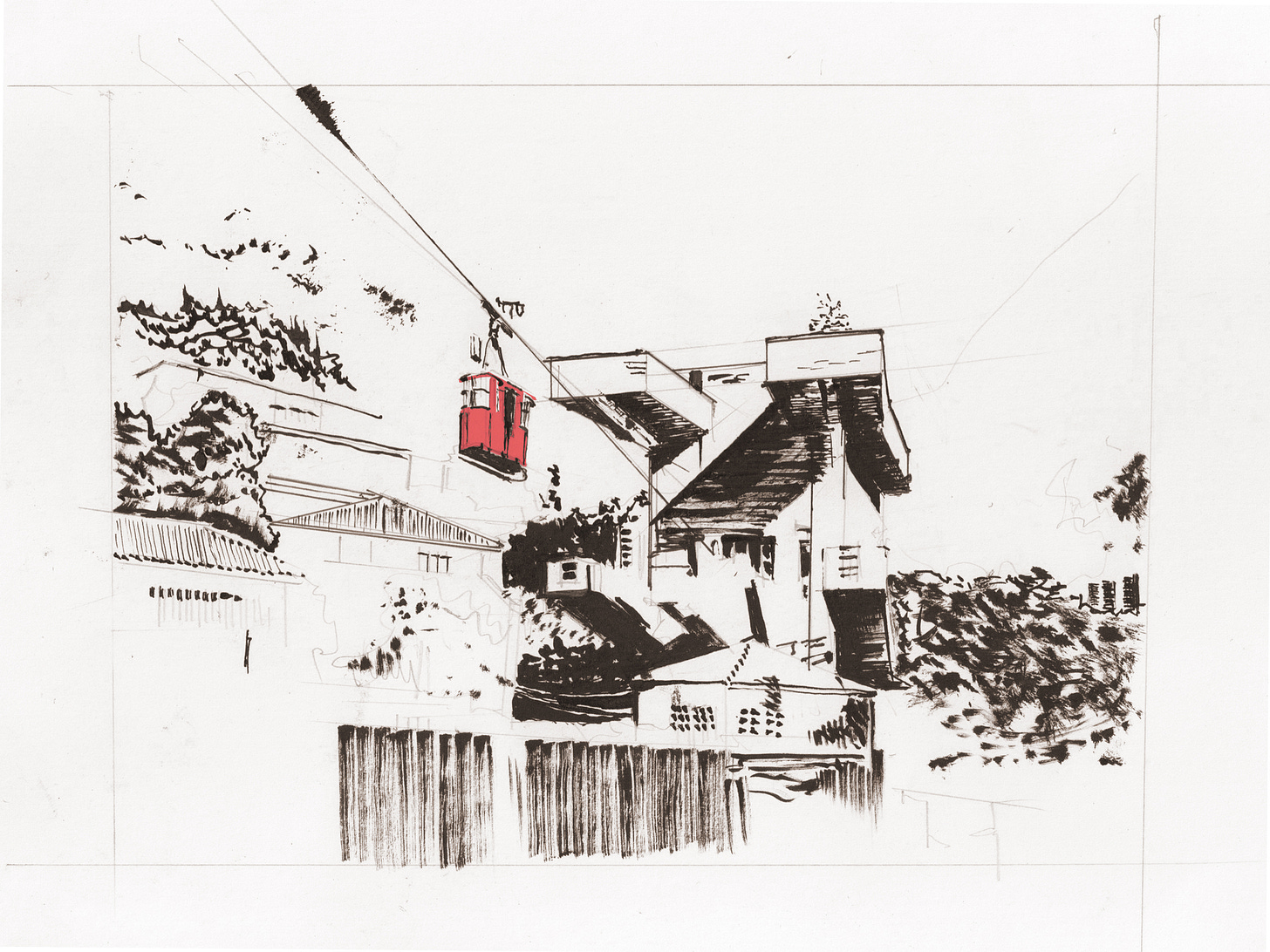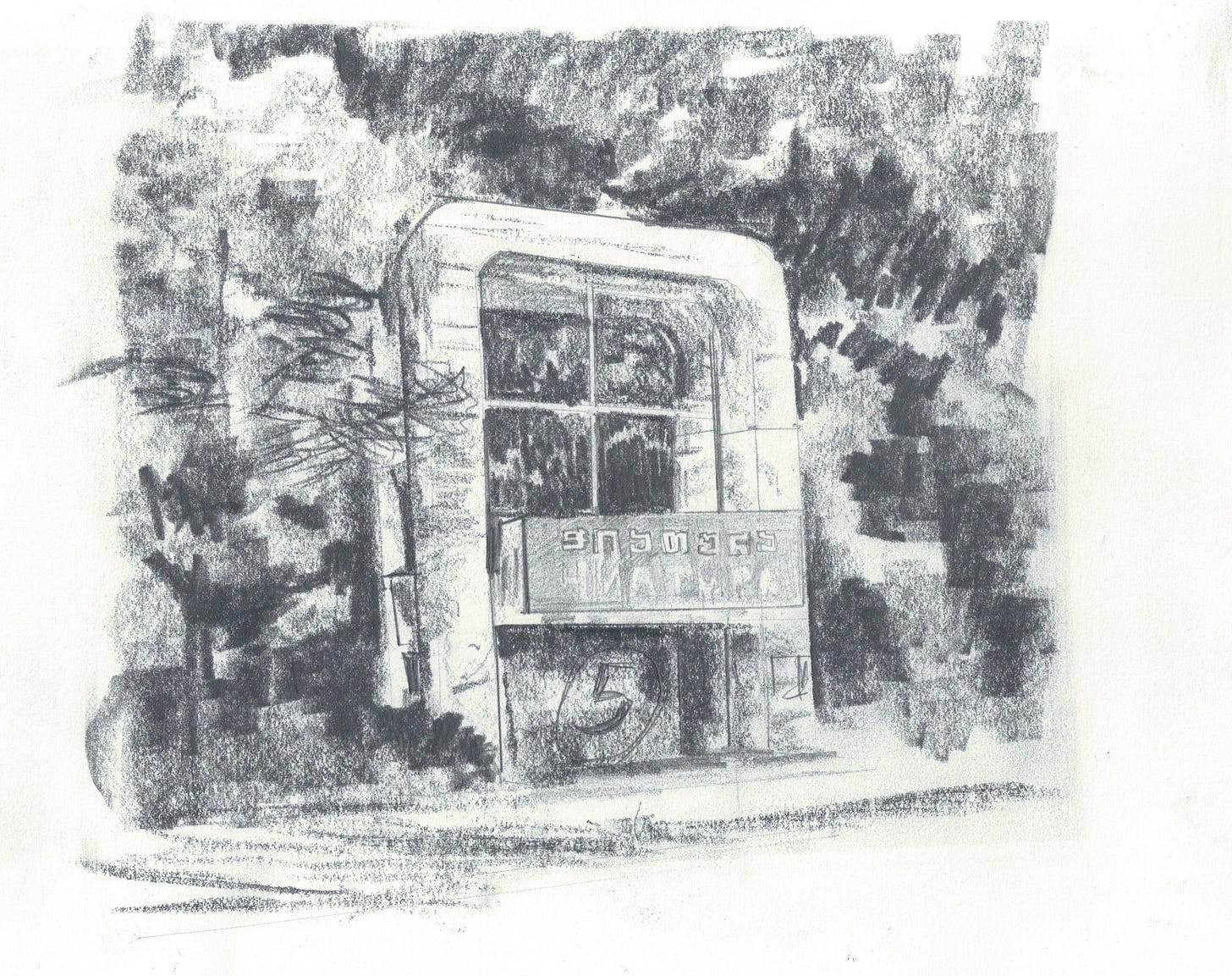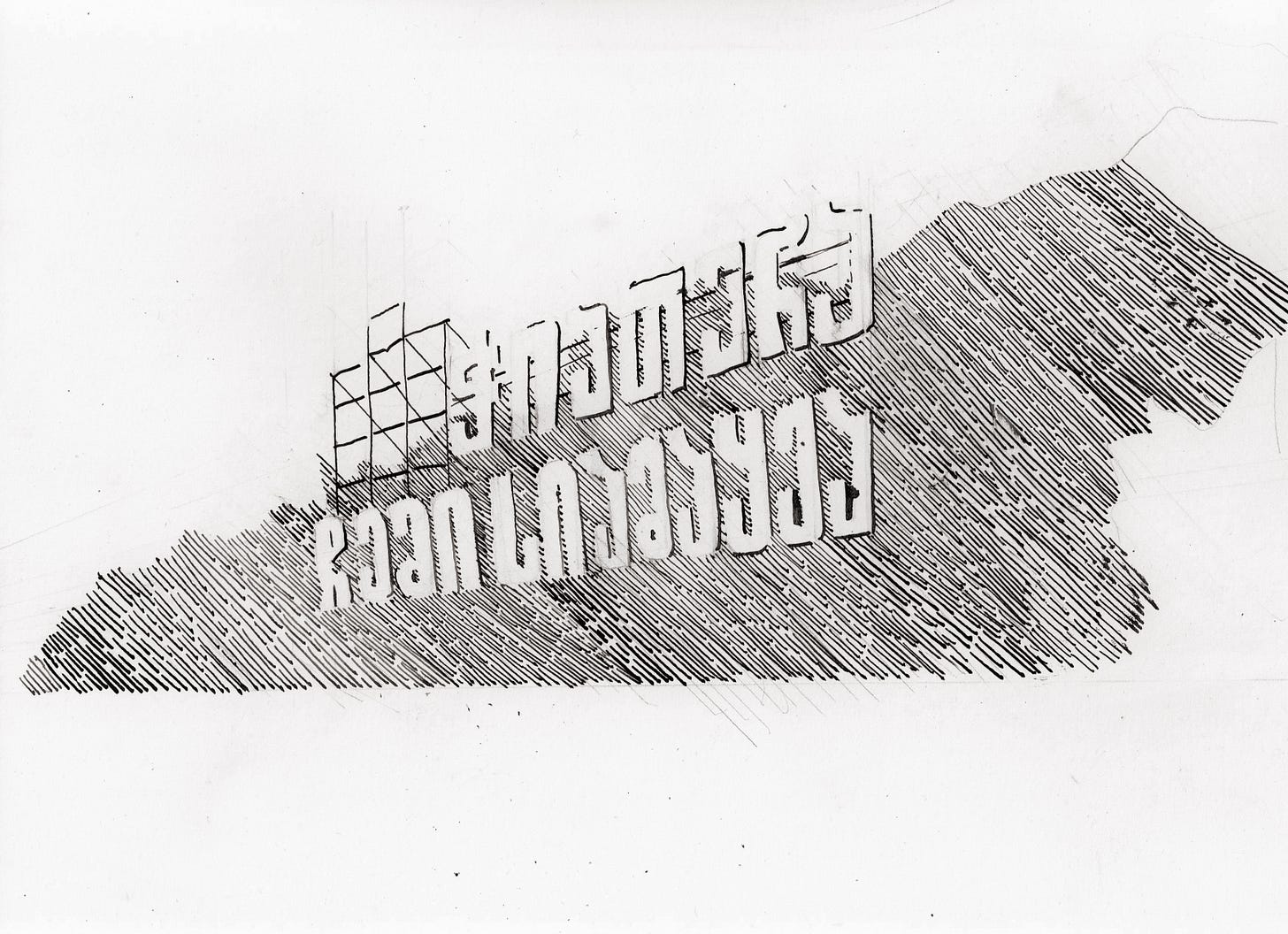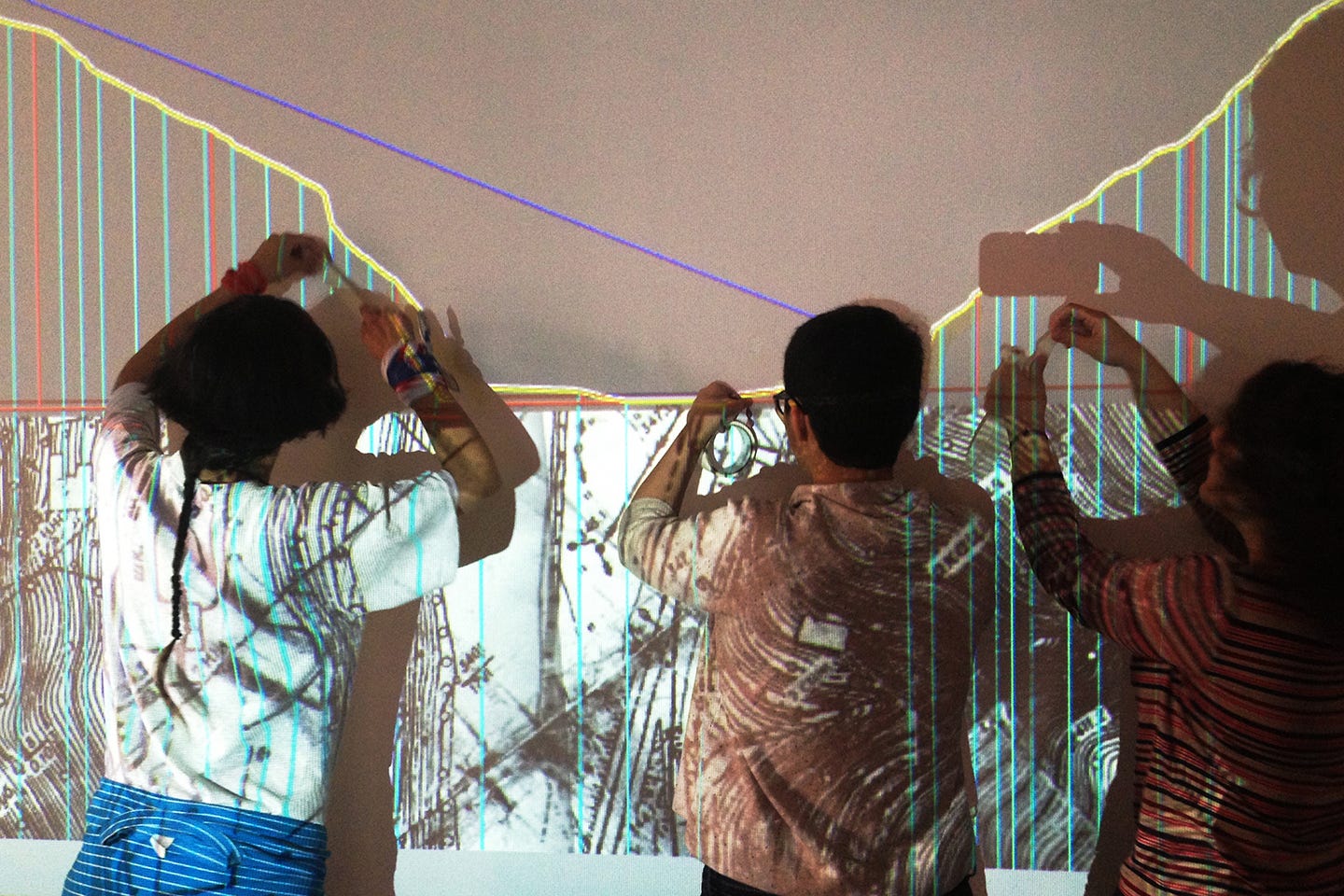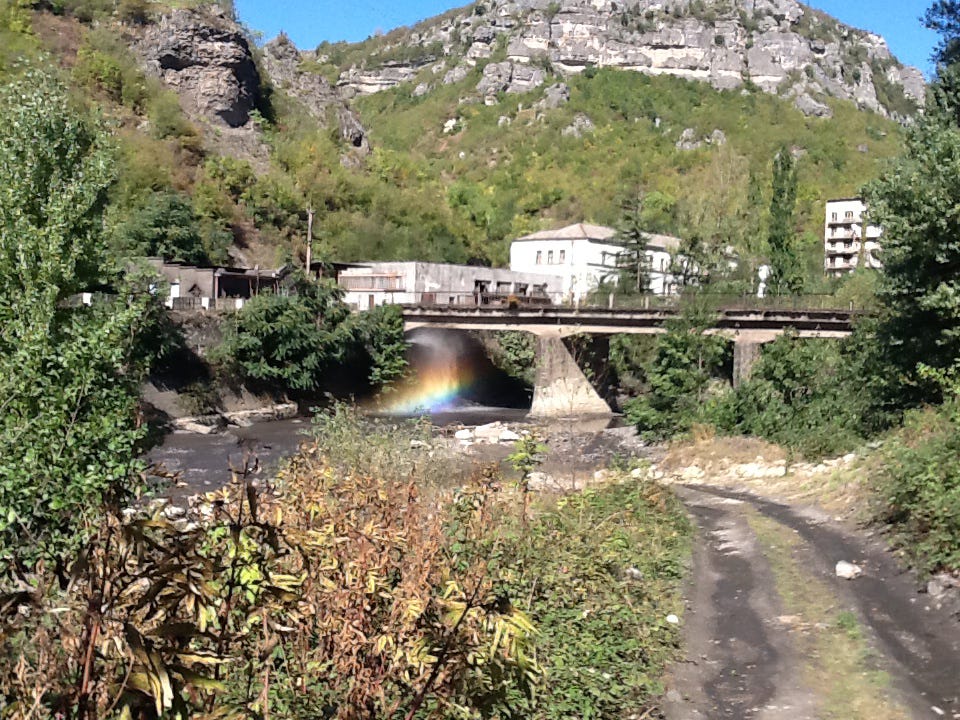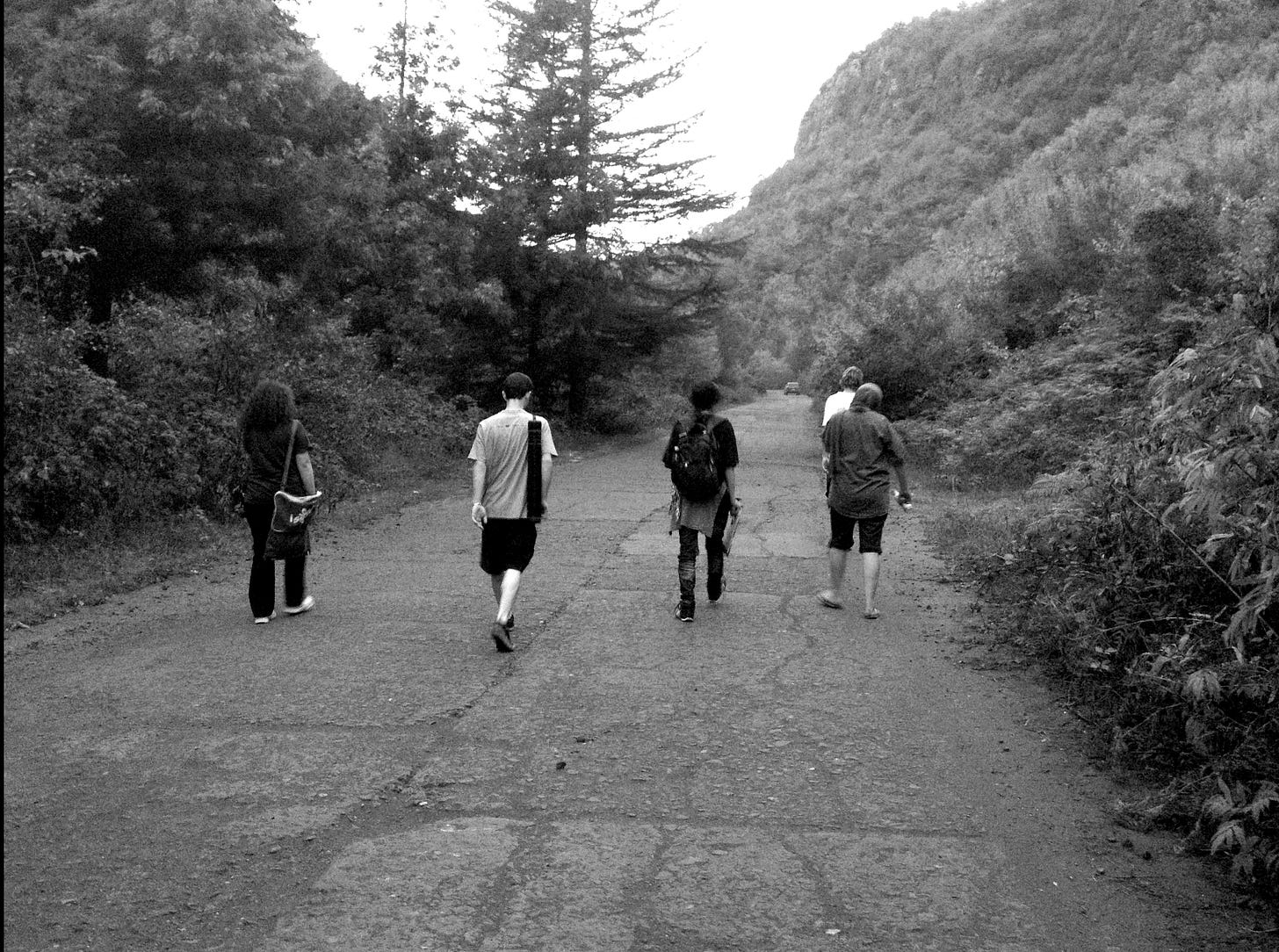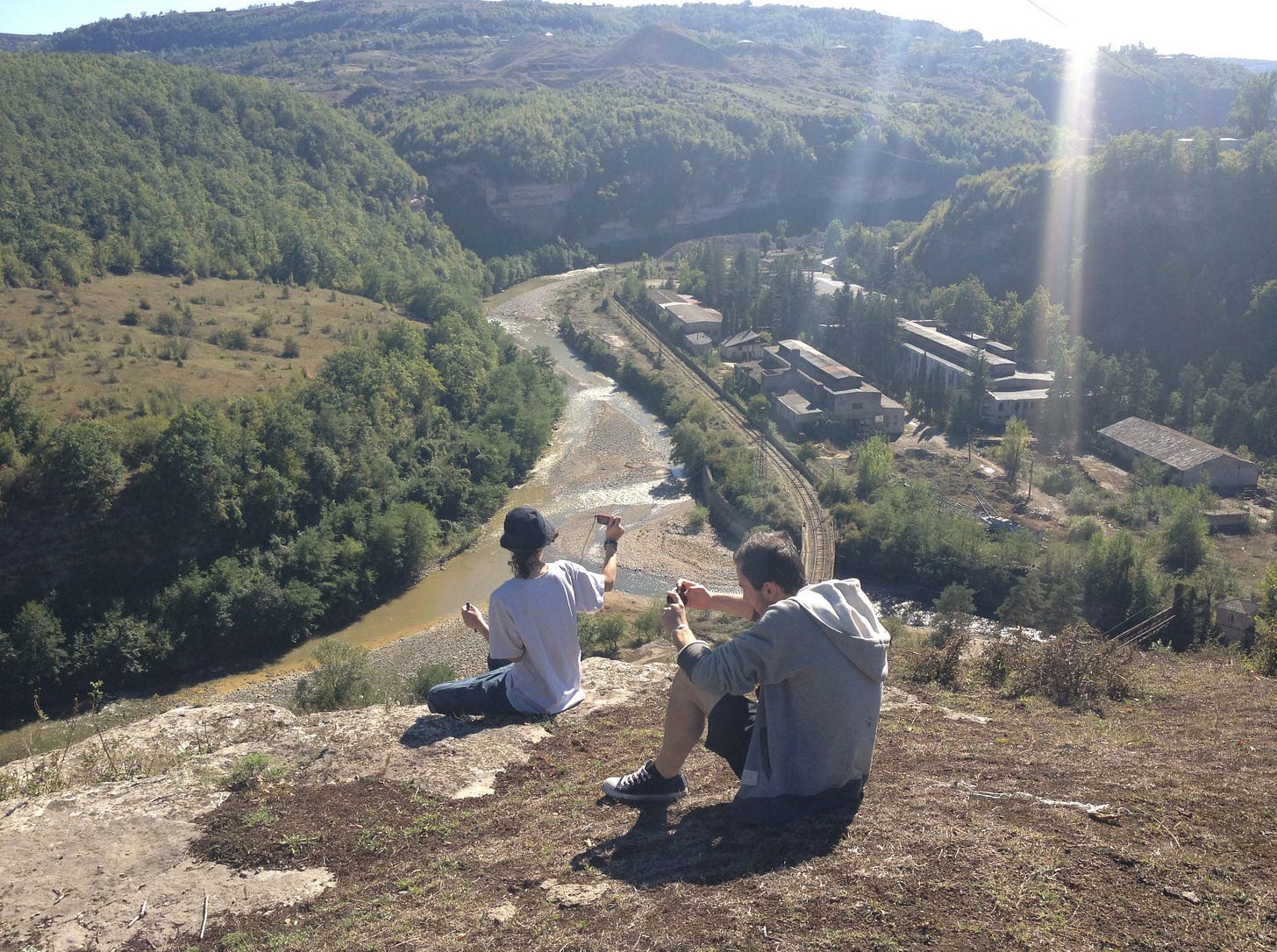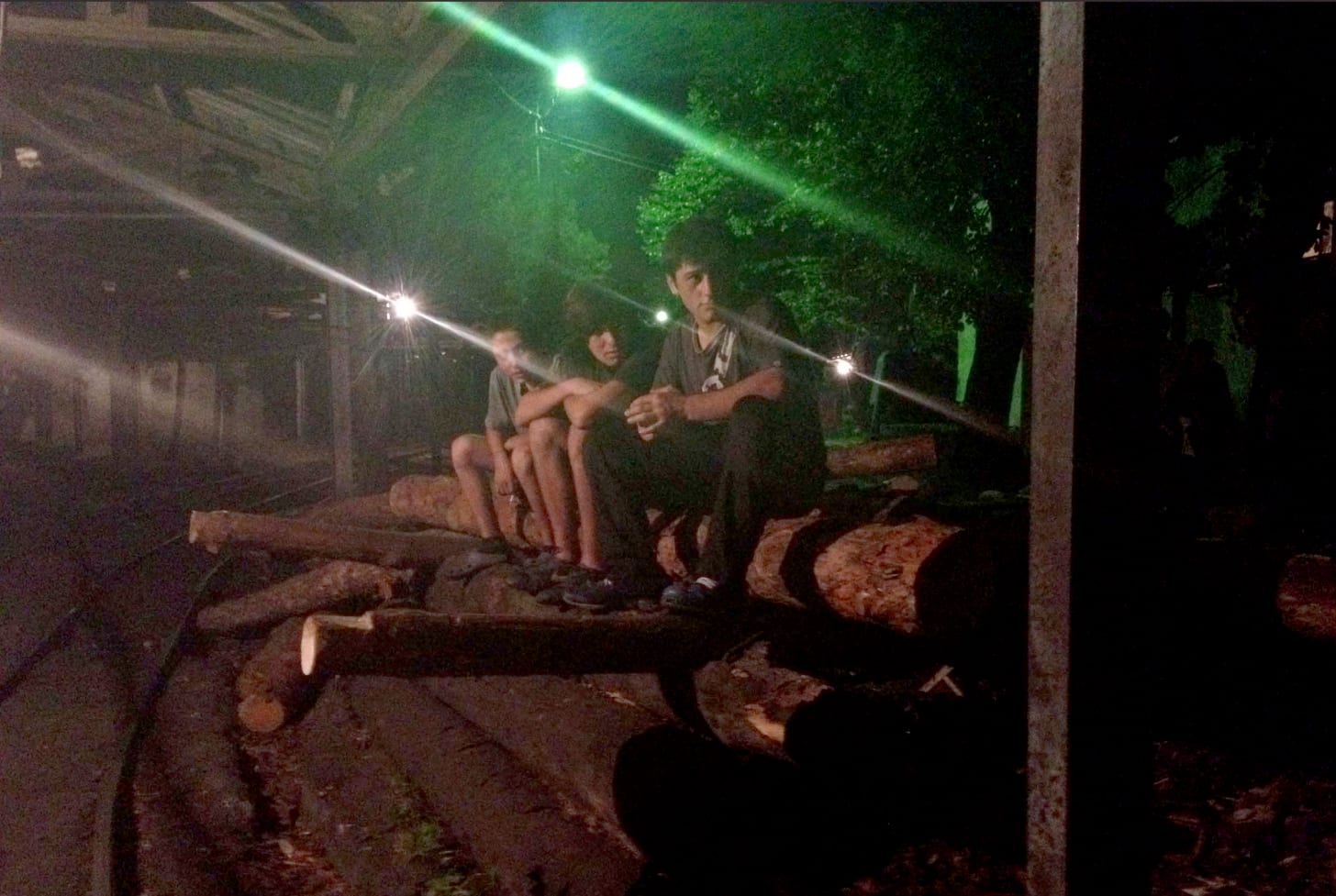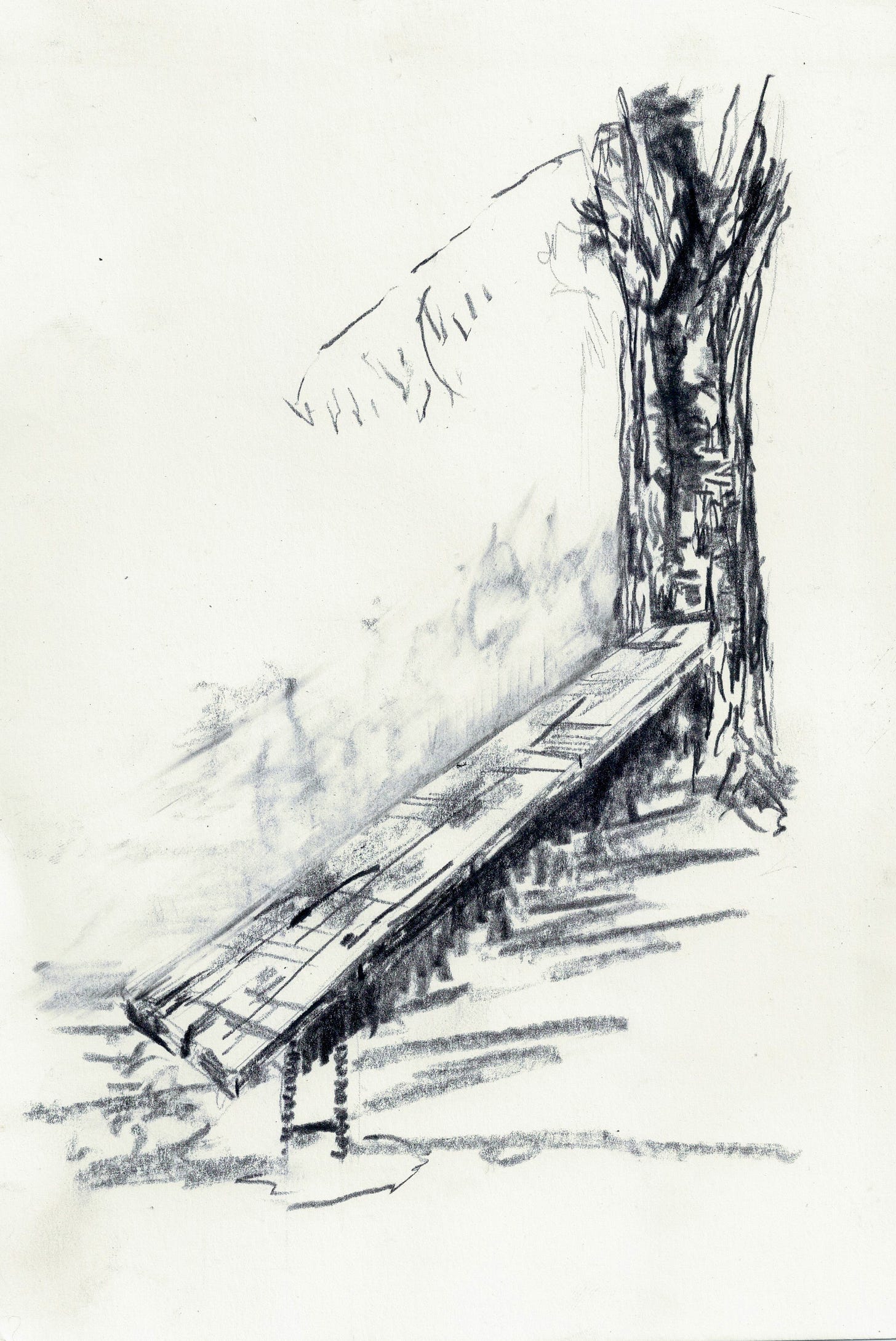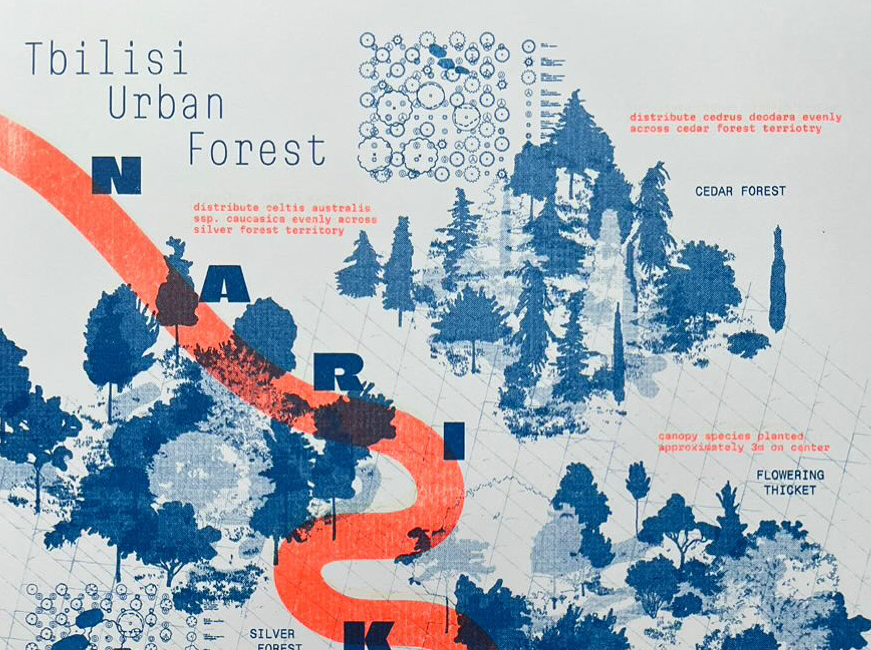Editor’s note, September 2024:
This text, titled ‘We Come in Peace’, developed from a workshop program that Ruderal Academy hosted in the Western Georgian city of Chiatura in 2012 for the Tbilisi Triennial. 12 years later, the ongoing ecological disaster in Chiatura is no less prevalent, with residents of Shukruti, a village severely impacted by the region’s mining operations, announcing a hunger strike and bringing their months-long protest to the doors of parliament.
Ruderal Academy, founded in 2008 by Sarah Cowles, is an itinerant school of landscape interpretation and ecological design. The academy is educational, productive, and projective, where participants utilize both fine art and design research techniques to analyze current landscape conditions and speculate on possible futures. Ruderal Academy partners with educational and cultural institutions to locate a specific site of study and develops a semester-long study program. The selected site serves as both the campus and the primary text.
Learning at Ruderal Academy has both horizontal and vertical implications; participants gain both transferable skills in landscape analysis and an in-depth knowledge of site and situation enhancing subsequent projects in the region.
In the fall of 2012, Ruderal Academy 007 was based in the city of Chiatura, Republic of Georgia. Chiatura is a center of manganese mining in the foothills of the Caucasus mountains. Previous sites of Ruderal Academy investigation include: hypersaline lagoons in the San Francisco Bay, a reservoir breach in a state park in the Missouri Ozarks, a channelized industrial river in the Berkshire region of Massachusetts, and the landscape of the US-Mexico border in El Paso, Texas and Juarez, Mexico.
Ruderal is an ecological term that refers to species that are adapted to thrive in conditions of scarcity and disturbance. Ruderal species are often called pioneer species in that they hold territory in advance of more stable species. The ruderal suggests a form of practice that begins with the given; to work from the ground up, to work fast, iteratively and with minimal means. As such, Ruderal Academy lands in sites of transition and disturbance, places with rich political, historical, social, industrial and ecological contexts. The school is open to students, professionals and local citizens from all disciplines who are interested in both gaining analytical skills and creating interpretive works in an intensive collaborative setting. Participants in Ruderal Academy programs address a particular place at a particular time, and establish a temporary community of learning, exchange and dwelling. Lectures and tours are provided by local professionals and scholars, and participants receive feedback in critiques from designers, artists, and professionals.
Ruderal Academy programs are comprised of three phases:
Site inventory, archival research and documentation
Analysis and interpretation of research
Development and execution of site-specific interventions, design proposals, or studio artwork
Ruderal Academy 007: Chiatura
Chiatura is the site and subject of a series of workshops introducing techniques of landscape research, analysis, interpretation, and design through intensive site exploration and artistic production.
Chiatura is a working landscape dominated by mining operations and facilities. Manganese is mined at upper elevations of the Kvirila gorge. The ore is processed, and then transferred to railcars at the river bottom. Black sediments from mining operations foul the Krivila River from Chiatura southward. Half of the riverside operations are in ruin - a linear landscape of black drifts of ore and piles of crumbling concrete. One system of rope ways conveys ore from the mines to processing facilities on each side of the river. A second set transports people from the river bottom to the upper levels of the gorge and from village to village.
The first phase of the workshop focused on exploration of the region and resulted in a series of artworks interpreting how land use and social spaces are stratified in relation to elevation. These works were exhibited at the 1st Tbilisi Triennial. The second phase focused on materials of the site; the ore and grit - the physical, material, and textural elements that define the aesthetic character of Chiatura. The third phase, developed over winter 2013, synthesized the two previous analytical phases into a design proposal and into a remediation program for the city and the Kvirila gorge.
On the first day of the first phase, each participant was assigned to a different sabagiro or gondola, to travel from the bottom of the river to the upper elevations. They spent the day sketching, slowly returning to the guesthouse in a Situationist 'derive'. Each participant returned and shared stories and vignettes about the landscape of the gorge. This exercise helped build the group's collective knowledge of the site.
The next day, participants were assigned a series of landscape terms to define both verbally and with illustrations or photographs from Chiatura, creating a common, site specific language to discuss and evolve the project. After a few days some participants had to return to Tbilisi and a core group of 4 students remained. The following days participants revisited certain sites for further sketching and study, including the terminus of the mine train, an ore processing plant, and the village of Darkveti at the upper plateau.
The installation at Europe House - entitled We Come in Peace - is an interpretation of a series of 'social and ecological incidents' that occurred during the workshop, and at different elevations within the gorge. A large section-elevation drawing orients viewers to the topography of the gorge, and each installation carries an elevation notation that corresponds to the section drawing. In these works, the participants sought to capture how spatial, social and psychological implications of how sabagiro travel within the topography of the city create an idiosyncratic vertical urbanism.
Peace
Mshvidoba, or 'Peace' is the name of a miner's sabagiro. It rises 1000 meters from the center of the city at a 42-degree pitch. We Come in Peace refers to a pop culture meme; a message to humans from friendly aliens arriving on planet earth.
Rainbow Geyser
Walking down from Itkhvisi through the big black ore puddles past the mill-at the river, a geyser of water, 12 meters high, bright white against the black dust. A second break nearby, a softer arc. Under the bridge, a weeping, pulsing rainbow. A system fails, and produces absurd beauty.
The Jackals
At dusk, up the canyon to Sarkvelotubani, howling from the cliffs, a chorus, a crescendo. Didn't know they were there, did we, and not this many. I stop, a dog ahead, and a drunken hermit is descending, talking talking talking. He speaks of his daughter. I choose him over the angry dog below, together we walk for 5 minutes, he peels off up the stone path, talking talking talking. When the canyon opens, a grind, a whine, a water pump starts. They say they never saw or heard this man, but the jackals, they did.
Entry
Corning into Darkveti from Sachkhere, into the gorge, the first mill site grown over with grass. A green passenger car on a siding. At the turn where the tributary meets confluence is exoskeleton of a cafe, cantilevered over the river. In shadows, the monument reads 'Chiatura'. The cliffs rise, undercuts hung with ferns, weeping water. The Kvirila river runs black from here to Zestaponi.
Waiting for the Ore Train
At night we rode Peace up, walked past the blocks. At the tunnel entrance a hydraulic sound, a pump, air perhaps, and boys and a grandmother are sawing logs together for firewood. The boys sit on the log pile, some wrestling. Green light reflected off the trees. After a half hour the mine train comes, the catenary arcing. We follow it to the tipple, watch as the ore is unloaded into cable-drawn hoppers that traverse the gorge to the mill on the south side.
The Busy Man
Searching for the Darkveti-Sareki rope way, driving up the cobble road laid by German POWs, past the ruin of the chemistry laboratory, we ask a man sitting alone on a bench for directions. He looks about, and informs us he is busy at this moment, but can tell us. Look behind you, bavshebo.
As outsiders to the city, the workshops participants were seen as aliens; treated with equal parts hostility and hospitality. The stories depicted represented the sublime and elusive genus loci of Chiatura; a place where rocks fly and the river runs black.
During the second phase, participants explored three sites in Chiatura: a concrete plant in Darkveti near the start of the gorge, an abandoned ore washing plant, and the Itkhvisi-Zodi ropeway. They observed the resilience of the land and people of Chiatura and explored ideas related to physical and metaphorical grit filtration, catchment, and processing. On the second day, they created drawings interpreting the sites, representing soils, mining surplus, vegetation, architectural and industrial artifacts, and water. These visuals serve as reference points to guide aesthetic and material decision-making for future projects in Chiatura.
Institutional partners and sponsors of Ruderal Academy include The Knowlton School of Architecture, The Saa Fox School of Design and Visual Arts at Washington University in Saint Louis, Robert Reich School of Landscape Architecture at Louisiana State University, The Rubin Center at University of Texas at El Paso, The Center for Land Use Interpretation, Tbilisi State Academy of the Arts, The Massachusetts Museum of Contemporary Art, The Center of Contemporary Art, Tbilisi, and Bureau for Open Culture.
Read on Substack